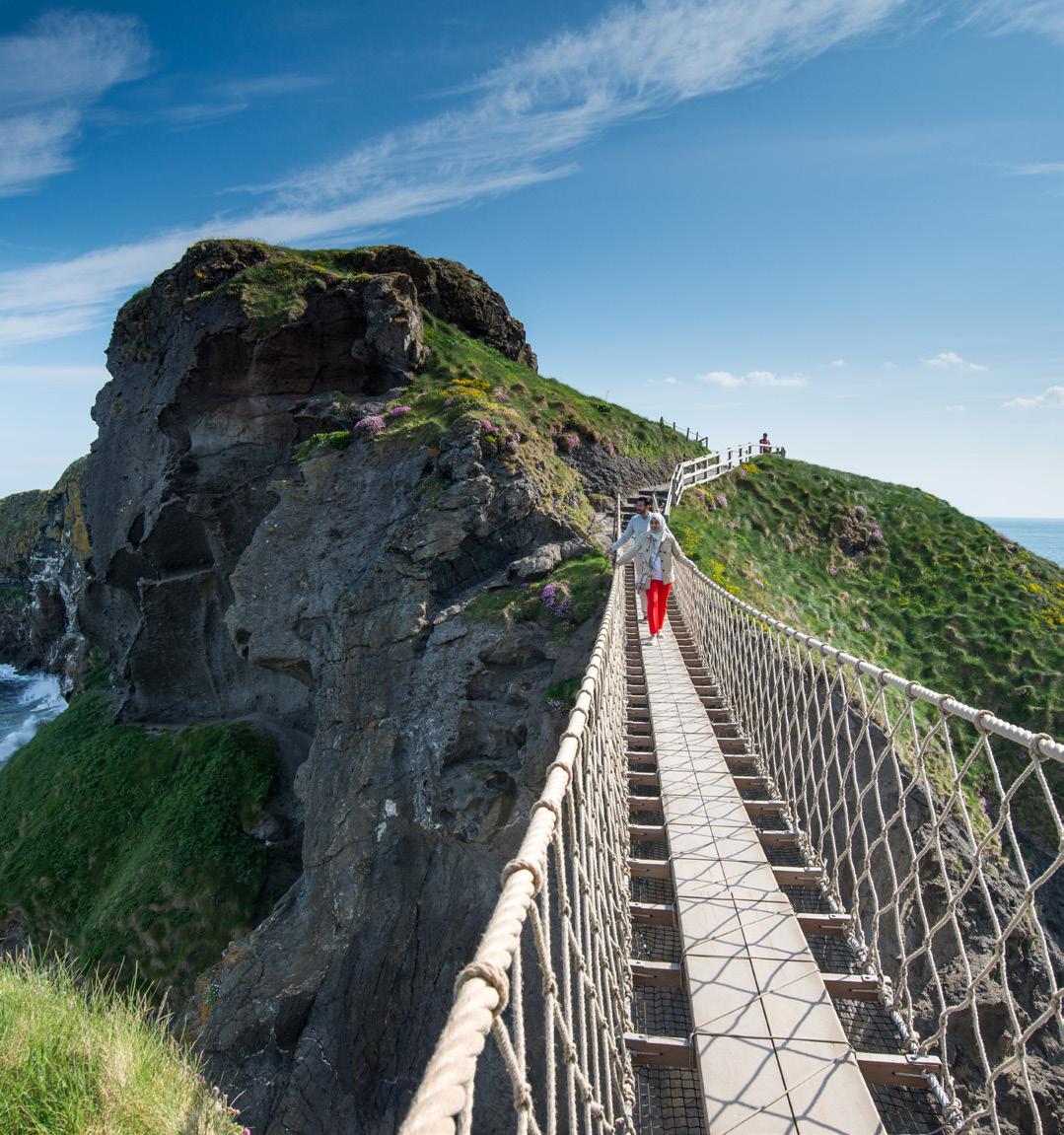
10 minute read
Dreaming of outdoor inspriation in the UK?
We round up the best outdoor art, sculptures and natural wonders to visit in the UK.
Carrick-a-Rede Rope Bridge

Carrick-a-Rede Rope Bridge Built by fishermen in 1755, this 20 metre rope bridge links Northern Ireland’s mainland in Ballintoy to the tiny ancient volcanic island of Carrick-a-Rede (from the Scottish Gaelic Carraig-a-Rade meaning The Rock in the Road). Dolphins, porpoise and even large sharks can be spotting swimming off the coast, whilst nearby Rathlin Island has one of Britain’s largest seabird colonies including puffins. nationaltrust.org.uk/carrick-a-rede
Gallos Statue

High on the Cornish cliffs at Tintagel Castle stands the regal bronze Gallos statue by Rubin Eynon. (Gallos meaning power in Cornish.) The tall hooded figure holding a sword is inspired by the royals associated with this medieval castle – notably King Arthur, one of Britain’s most famous figures, who, according to a 12th century writer, was conceived there. english-heritage.org.uk
The Kelpies

The Scottish lowland town of Falkirk is the home of The Kelpies, two ginormous horse head statues. Looming above the Forth and Clyde canal in The Helix parkland, the 30 metre high Kelpies, which during a paid tour you can go inside, have become the world’s largest equine statues. Made by Scottish sculptor, Andy Scott from 36,000 steel pieces, the horses were inspired by the Clydesdale draught horses used for haulage along the canal or on land. thehelix.co.uk
Stonehenge
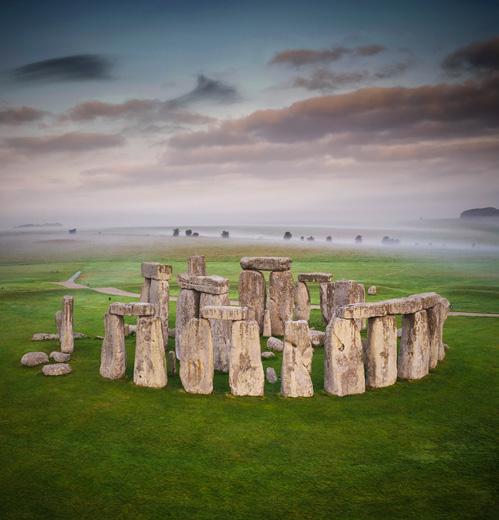
With its 4,500 year old stone circle, Stonehenge on Salisbury Plain is one of world’s most famous prehistoric monuments. On 21 June (the longest day) the sun rises on the isolated Heel Stone and sets on the shortest day, linking the iconic landmark to the stars or to a temple to sun and moon gods. See how the circle’s creators lived at the reconstructed Neolithic thatched huts nearby. english-heritage.org.uk
Giant’s Causeway
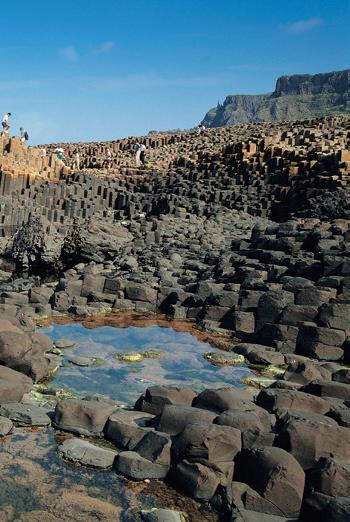
Volcanic activity many millennia ago created the hexagonal black basalt columns at Giant’s Causeway on the Northern Irish north coast of County Antrim, although legend has it that an Irish giant, Finn McCool built it as a bridge to Scotland. Over the years, the columns have taken on unusual shapes like chimney stacks or even a giant’s boot. Also worth spotting at this UNESCO World Heritage Site are the seabirds, crab and rare plants which live here too. nationaltrust.org.uk/giants-causeway
Smeaton’s Tower

Best known as the legendary place where Sir Francis Drake played bowls before sailing to defeat the Spanish Armada in 1588, Plymouth Hoe is home to the Grade I listed red and white landmark, Smeaton’s Tower. Walk up its 93 steps for views over Plymouth Sound and the city. Originally situated on Eddystone Rocks, off Cornwall, the lighthouse has been on the Hoe since 1884 and repainted in its traditional red and white colours this year. Modelled on the shape of an oak tree that bent with the wind, John Smeaton’s 1759 tower was a radical lighthouse design of its day. plymhearts.org/smeatons-tower
The Box


Plymouth’s history merges at The Box. Redeveloped from the Plymouth Museum and Art Gallery and Central Library, the £40 million glass panelled space will house the city’s collections from natural to maritime history and the region’s archive. Across a new square, St Luke’s Church will display contemporary art. theboxplymouth.com
St Nectan’s Glen

Don wellies to visit St Nectan’s Glen in the Cornish hamlet of Trethevy, with its three waterfalls, shallow pool to wade in and river bank woodland walk. Named after the eponymous sixth century saint, the waters at St Nectan’s Kieve that gush through a hole in the rocks are thought to be healing too. Head to the wooden café for a light bite or chill out in a forest retreat. st-nectansglen.co.uk
Portmeirion Village
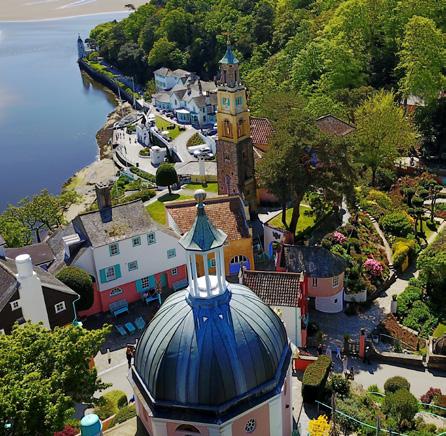

Once a backdrop for a cult 1960s sci-fi television series, The Prisoner, and the subject of this year’s ITV documentary series, The Village, colourful Portmeirion Village in North Wales is unique; it combines a man-made Italianate village, subtropical forest and sandy Welsh beaches. Top tips include staying at the Great Gatsby-style hotel and sampling local mussels in the neo-Gothic castle’s brasserie. portmeirion.wales
Wiltshire’s White Horses

Explore Wiltshire through its eight white horses carved into the South West county’s hillsides. Take the oldest horse designed in 1778. Its Westbury setting includes an iron age hill fort and 14th century church. Two other horses overlook the Vale of Pewsey with its quaint thatched roof cottages, canal and trout fishery. visitwiltshire.com
Wharram Percy Medieval Village

Of the 3000 deserted medieval villages in Britain, Wharram Percy in North Yorkshire is one of the largest and best preserved. With remains including watermills, a pond, church, barn as well as houses, the site evokes 600 years of life to 1517.
Based near Malton, the historic market town is also worth checking out with its popular monthly food market and horse racing stables, which have an open day on 13 September. english-heritage.org.uk
The Singing Ringing Tree

Overlooking Burnley in Lancashire is this three metre tall wind powered, sound sculpture. Shaped into a windswept tree by 21 layers of galvanised steel pipes, the eerie discordant sound is created by the wind blowing through them. Designed by architects, Mike Tonkin and Anna Liu, the eco- artwork won the National Award for architectural excellence in 2007. visitlancashire.com
Jupiter Artland

For vibrant, thought-provoking art, wander through the 120 acre sculpture park outside Edinburgh. Anish Kapoor’s caged bottomless vortex and Marc Quinn’s tall vibrant orchid, known as Love Bomb, are among the stellar works. New for this year are reconstructions of works by performance art pioneer, Allan Kaprow including his melting ice sculpture; as well as the chance to stay overnight - in the house where artists live when working on projects. jupiterartland.org
Maunsell Sea Forts

Take a boat trip from Herne Bay into the Thames Estuary to see the Second World War memorial, the Maunsell sea forts, named after the civil engineer who designed them, Guy Maunsell. Built in 1942 to help protect London from German airstrikes and sea raids, each steel fort housed weapons and 265 soldiers. Abandoned in 1958, a few survive. maunsellseaforts.com
The Dark Hedges
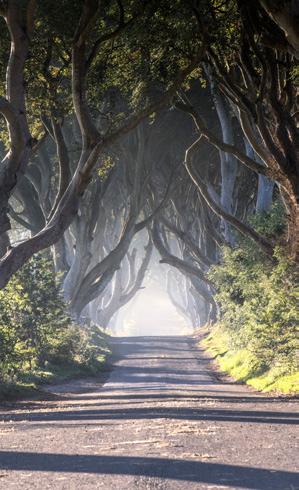
If you are suffering withdrawal symptoms from cult television hit, Game of Thrones, head to the fabled Dark Hedges in Ballymoney, Northern Ireland - one of the most photographed natural phenomena and a popular attraction for tourists from across the world. For this avenue of gnarled trees was the setting for Westeros’s Kingsroad. Planted in the 18th century, this avenue was dubbed one of the world’s most beautiful streets by Architectural Digest. ccght.org/darkhedges/ Step on set: The Dark Hedges' appearance as the 'Kingsroad' in Game of Thrones brought international fame - for more cinematic inspiration you might also enjoy our 'Stepping on Set' article p88
Fingal’s Cave
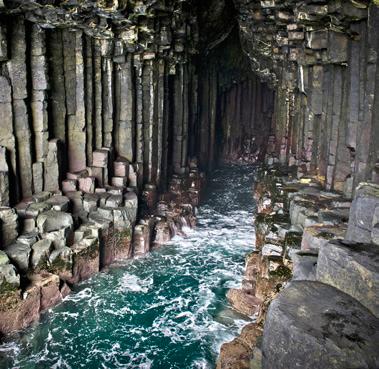
Known for its natural acoustics, thanks to its arched roof and moving waves, the fabled sea cave retains its ethereal experience. Located on the uninhabited Hebridean island of Staffa, the 227 foot tall cave with its volcanic-formed columns is only accessible by boat – either from the mainland or surrounding islands. Puffins with their colourful beaks add charm from May to August. nts.org.uk/visit/places/staffa
Fairy Pools

Visit the clear blue Fairy Pools on the Isle of Skye, just off the north-west Scottish coast in the inner Hebrides. The gushing waterfalls and swirling pools lie in a large glen at the foot of Scotland’s rocky Black Cullins mountains. Nearby is the rural village of Carbost, known for its 19th century Talisker single malt whisky distillery. visitscotland.com
Hadrian’s Wall

Spanning England from east to west from South Shields near Newcastle to Cumbria’s Maryport is Hadrian’s Wall. Built by the Romans around 122 AD, the wall marked the northernmost point of its empire. Walk alongside it to discover ancient forts, turrets and more, with picturesque views including Northumberland National Park. english-heritage.co.uk
Cerne Giant

Often associated with fertility, the Cerne Giant is an ancient chalk outline of a naked man wielding a club carved on Trendle Hill above Dorset’s historic village of Cerne Abbas. Dating back to early England, the olde worlde village developed around a 987 AD Benedictine Abbey whose remains can still be found near the medieval Church of Saint Mary. nationaltrust.org.uk/cerne-giant
Hardy Monument

The Hardy Monument commemorates Vice Admiral Sir Thomas Masterman Hardy, renowned as the captain of HMS Victory, Nelson’s flagship at the 1805 Battle of Trafalgar where they defeated Napoleon. Standing on the summit of the Black Down in Dorset since 1844, this 22 metre high monument was also built as a shipping landmark. Now the climb of 120 interior steps to the top serves as a spectacular viewing point across the Dorset countryside and coast -and The Isle of Wight Needles on a clear day. nationaltrust.org.uk/hardy
Angel of the North

20 metres high with a 54 metre wing span, Antony Gormley’s Angel of the North in Gateshead has become one of Britain’s most iconic public artworks. Located along a main road in and out of the city, the statue has become a symbol of the city’s identity too. Unveiled in 1998 on the site of former coal pithead baths, the steel sculpture has remained “a focus of hope,” as the artist said at the time. newcastlegateshead.com
Dorset County Museum
Dorset’s treasures re-emerge following a museum facelift. Highlights include its Thomas Hardy collection, archaeological finds relating to the county since prehistory and the fearsome long jaw of a pliosaur, an extinct marine reptile, dating back 155 million years, found on the shores near Weymouth. Nearby visit ruins of a 4th century Roman Town House – the only fully exposed one in Britain. dorsetcountymuseum.org
Sound II at at Winchester Cathedral
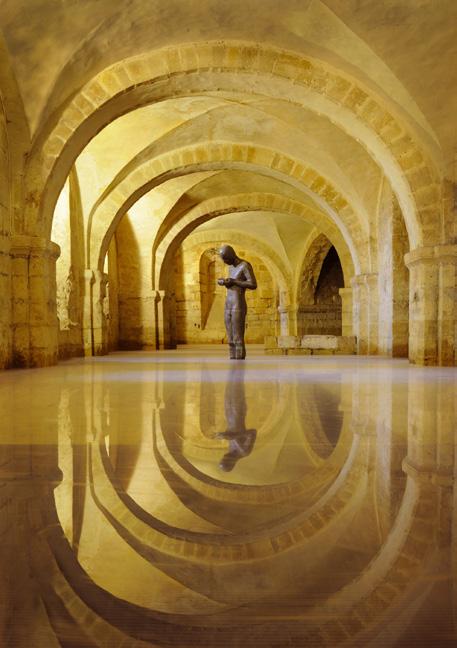
Modern and medieval British art collide as Antony Gormley’s contemporary man, cast out of lead from the artist’s body, stands in contemplation in the 11th century crypt. Best way to see the sculpture is via a viewing platform during the rainy season when the crypt floods – as a tube mechanism through the body fills the cupped hands with the rising water. winchester-cathedral.org.uk
Dove Cottage & Wordsworth Museum
Step back to the 1800s at William Wordsworth’s home in the Lake District. The cosy homestead, where the Romantic poet lived with his family from 1799 to 1808 has had a makeover for the 250th anniversary of his birth. Get a taste of how he lived from the kitchen, open fire living room, and study. Head next door to the newly expanded museum – for manuscripts, artworks and other artefacts. wordsworth.org.uk
The Museum of the Home
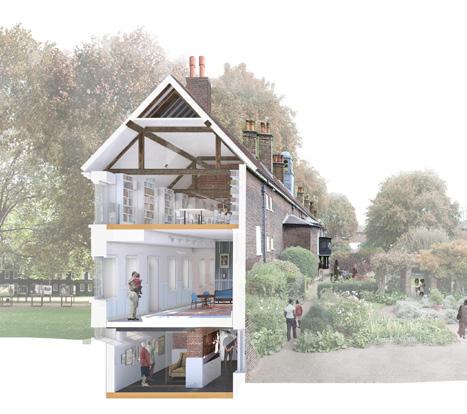
The row of 18th century almshouses has long been a Shoreditch landmark. Now after a two year transformation, the Museum of the Home (formerly the Geffrye Museum) will re-open, adding a roof garden and café to new galleries. A 16th century fireplace to Philippe Starck homeware feature in its collection. museumofthehome.org.uk
Words|Melanie Abrams










